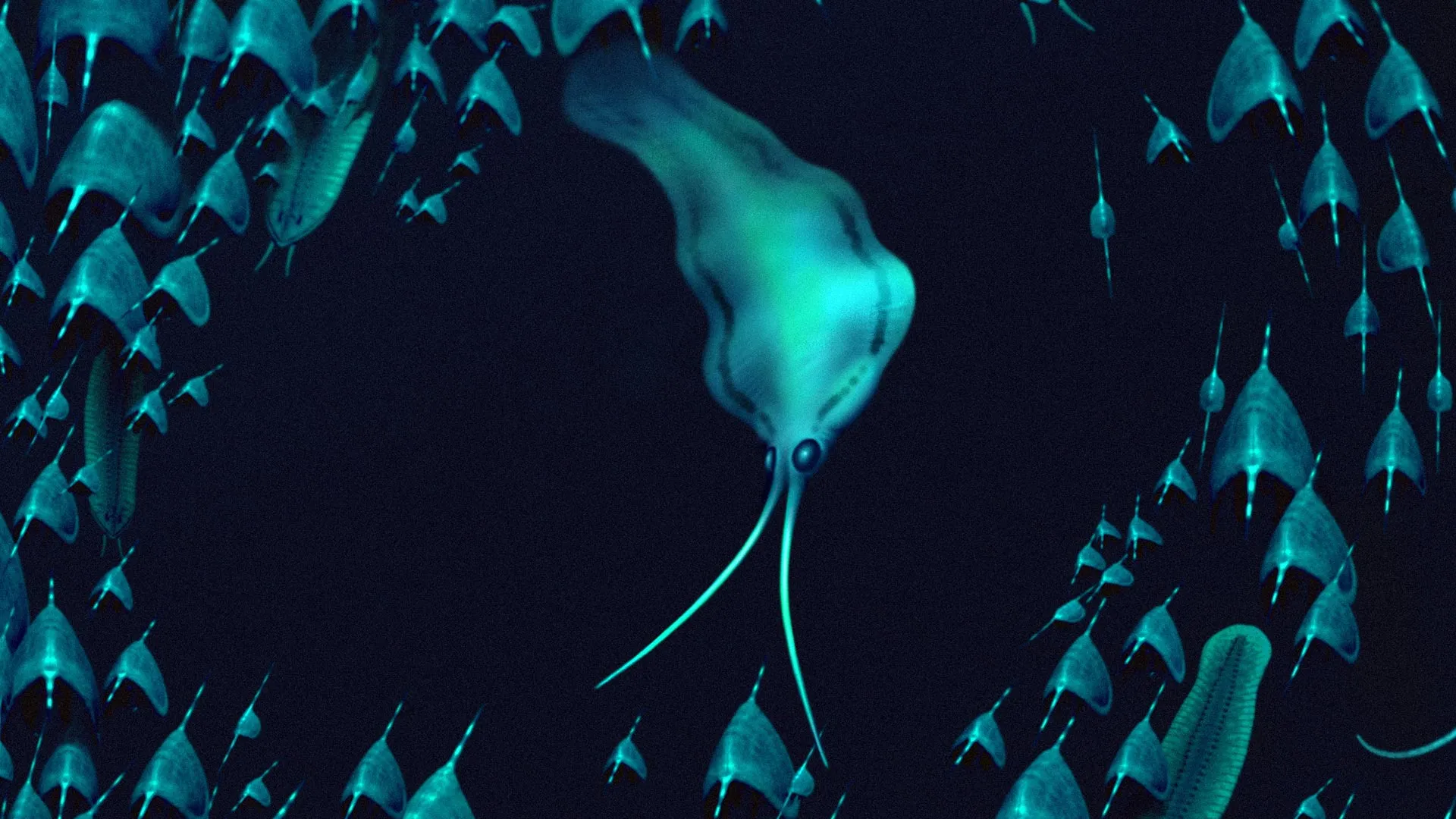Now Reading: 500-Million-Year-Old ‘Squid’ Revealed as Predatory Worms
-
01
500-Million-Year-Old ‘Squid’ Revealed as Predatory Worms
500-Million-Year-Old ‘Squid’ Revealed as Predatory Worms

Fast Summary
- Revelation and Classification: Scientists, lead by the University of Bristol, have discovered that nectocaridids-ancient squid-like creatures-are early descendants of arrow worms (chaetognaths), not cephalopods as previously believed.
- Fossil Site: Fossils were excavated at the Sirius passet site in North Greenland, known for exceptionally preserved marine organisms from 518 million years ago during the Early Cambrian period.
- Key Findings: The fossils had uniquely preserved nervous systems and other anatomical features like the ventral ganglion (specific to arrow worms),confirming their classification in the arrow worm lineage.
- Nectocaridid Anatomy: These creatures had advanced traits such as complex camera eyes, long antennae, and a swimming apparatus that made them formidable predators high on the ancient food chain. Evidence includes findings of arthropod carapaces in their digestive tracts.
- Species Name Tribute: The discovered fossil was named Nektognathus evasmithae after Professor Eva Smith, Denmark’s first female law professor and human rights advocate.
Indian Opinion Analysis
This discovery sheds light on evolutionary history with global significance but may also resonate with India’s active paleontological community working to uncover mysteries from earlier life forms within its own rich geological landscapes (e.g., Gujarat’s Cambrian deposits). The ideas presented here challenge classifications based on superficial similarities-a reminder for researchers globally about revisiting paradigms through modern technology and comparative analysis. For Indian researchers specifically, this breakthrough emphasizes attention to specialized sites with extraordinary preservation (like India’s Kachchh Basin) as critical hubs for uncovering ancient biodiversity stories pivotal to understanding global evolution trends.























